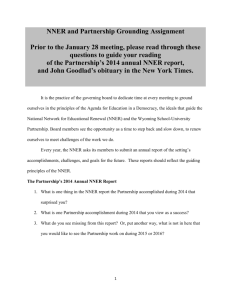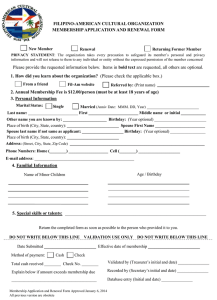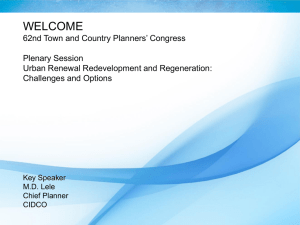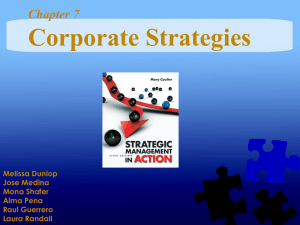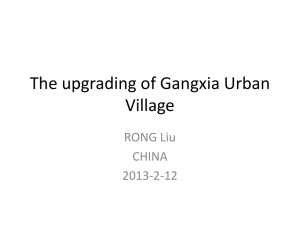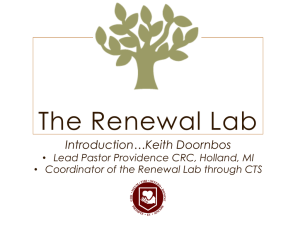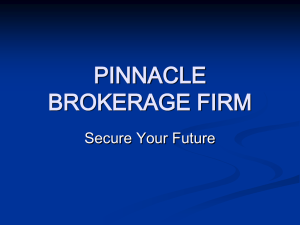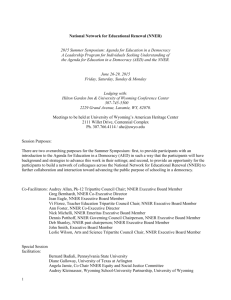NNER Values and Background: Leadership for a Better Democracy
advertisement
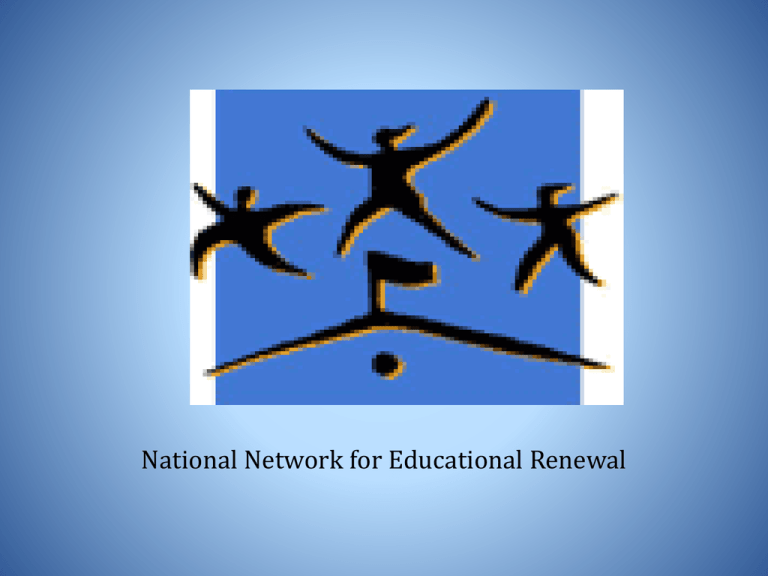
National Network for Educational Renewal National Network for Educational Renewal • John Dewey said the following: “Education is not preparation for life; it is life itself.” • John Goodlad made education and the study of schools his life and his legacy, and in part, this has been manifested in the National Network for Educational Renewal. A Brief History • 1985 Goodlad and colleagues created the NNER to advance the simultaneous renewal of schools and the education of educators • From Univ. of Chicago, to Emory Univ., to UCLA and then the Univ. of Washington • Over 35 books and more than 200 articles • “A Place Called School” (1984, 2004) & received the book of the year award from AERA Foundational Texts – Goodlad et. al A Place Called School 1984 The Nongraded Elementary School 1987 Places Where Teachers Are Taught 1990 The Moral Dimensions of Teaching 1990 Educational Renewal: Better Teachers, Better Schools 1994 • Education For Everyone 2004 • • • • • National Network for Educational Renewal • School, Community, Arts and Science, and Education colleagues who work across the boundaries within our institutions and across settings • We co-labor to provide access to quality education for current P-12 students and future educators. Why Focus on Schools? Schools, as no other public institution can, open doors to life’s possibilities and advance students’ understanding of their responsibility to the public good. Ann Foster National Network for Educational Renewal The NNER facilitates the simultaneous renewal of schools and the education of educators to promote the public purposes of education in a democracy. To accomplish this, the NNER is committed to facilitating close collaboration among colleagues in education, arts and sciences, and schools. The NNER is not a program or a prescribed way of doing our work, rather it is a network of collegial support to advance our common purpose of providing excellent and relevant education to all using the Agenda for Education in a Democracy (AED) as our compass. The Agenda for Education in a Democracy (AED) Encompasses: • A four part mission • An overarching strategy • Specific, idea-driven set of conditions on which to focus renewal efforts NNER Mission – foster in the nation’s young the skills, dispositions, and knowledge necessary for effective participation in a social and political democracy; – ensure that the young have access to knowledge and skills required for satisfying and responsible lives; – develop educators who nurture the learning and well-being of every student; and – ensure educators’ competence in and commitment to serving as stewards of schools. Unpacking Access to Education Sounds Simple • …But what are the critical resources that must be included for Equitable Access? • • • • A possible list might include– Well prepared and supported teachers, High quality curriculum, Best possible instruction for every child Access to Knowledge cont. • Sufficient resources, • Schools organized for learning, • Ongoing professional development for educators, and • Standards, curriculum, and assessments supportive of educational goals. • Your list…? Unpacking the Rest of the AED 4 part mission in your partnership • Stewardship – we all have a stake in what happens in our public schools. Stewardship means holding a commitment to the entire learning community. • Engaged Learning through Nurturing Pedagogy – results when educators use developmentally appropriate, motivational, and intellectually meaningful approaches to teach substantive and essential content. Participation in a Social and Political Democracy • Civic Preparation and Engagement • Citizens are not born with the necessary knowledge, skills, or dispositions to make a democratic society possible. Democracy essentially means government by the people. A thoughtful and prepared public is critical to maintaining and sustaining this form of government. Overarching Strategy • So how is the AED enacted in a setting? • Simultaneous renewal of schools and the education of educators. Necessary for Simultaneous Renewal to Occur • There must be critical agreement on common goals & moral principles that guide collaborative work. • There must be ways to deliberate and come to working agreements on common purposes and processes. Renewal Elements cont. • Responsibility for change must be in the hands of those who make changes that improve schooling or are largely influenced by the changes. • These conditions must be operational on both individual and collective levels. The NNER: Simultaneous Renewal in Practice In short, good schools require good teachers and good teachers learn their profession in good schools. We put into practice our belief that the improvement of schooling and the renewal of teacher education must proceed simultaneously. Conditions 20 Postulates that advance: • the connections between a healthy democracy and schooling • Equity and excellence in structures, processes, and outcomes • The importance of quality educators who take care of their students and the profession • Goodlad, 1990, 1994 “Public schools must be understood as public not simply because they serve the public, but because they establish us as a public.” Benjamin Barber “To sustain and thrive, democratic societies require a well educated population.” John Goodlad Three Assumptions • What teachers know and can do is the most important influence on what students learn at school. • Recruiting, preparing, and retaining good teachers combine as a central strategy for improving and sustaining good schools. • School improvement cannot succeed without including conditions in which teachers can teach all students well. Our mission takes a long view; by improving schools and teacher education, we open doors to life’s possibilities for our students and our grandstudents. Conversation: Turning to One Another • I believe we can change the world if we start listening to one another again. Simple, honest, human conversation. Not mediation, negotiation, problem-solving, debate, or public meetings. Simple, truthful conversation where we each have a chance to speak, we each feel heard, and we each listen well. -M. Wheatley Conversations • What can we do better when we work together across boundaries? • How does working together in partnerships improve results for our students? • What are some examples of simultaneous renewal that are occurring in your setting? What are democratic practices? Where do you see them in practice? How democratic are the school/university/partnership practices? Student voices? Faculty voices? Community Partners’ voices? Vision and Commitment • So What Does an Evolving Partnership Setting’s Commitments Look Like? • Conversations over time • An investment of partnership resources • Time, expertise and … • One Setting’s Example • Used with their permission Renewing the Partnership through Conversation Who would you invite to the conversation? Who would convene? What roadblocks are there…how to overcome? The Partnership Puzzle Pieces The Big Picture Can Help As You Get Started Quotes for thought • We must BE the change we wish to see- M . Gandhi • We have to do the best we can. That is our sacred responsibility-Albert Einstein • You can never cross the ocean unless you have the courage to lose sight of the shoreChristopher Columbus • Example isn’t another way to teach, it is the only way- Albert Einstein • Imagine-John Lennon What Questions Remain • Contact us… • Annfoster@nnerpartnerships.org • Gregory.bernhardt@wright.edu • www.nnerpartnerships.org

